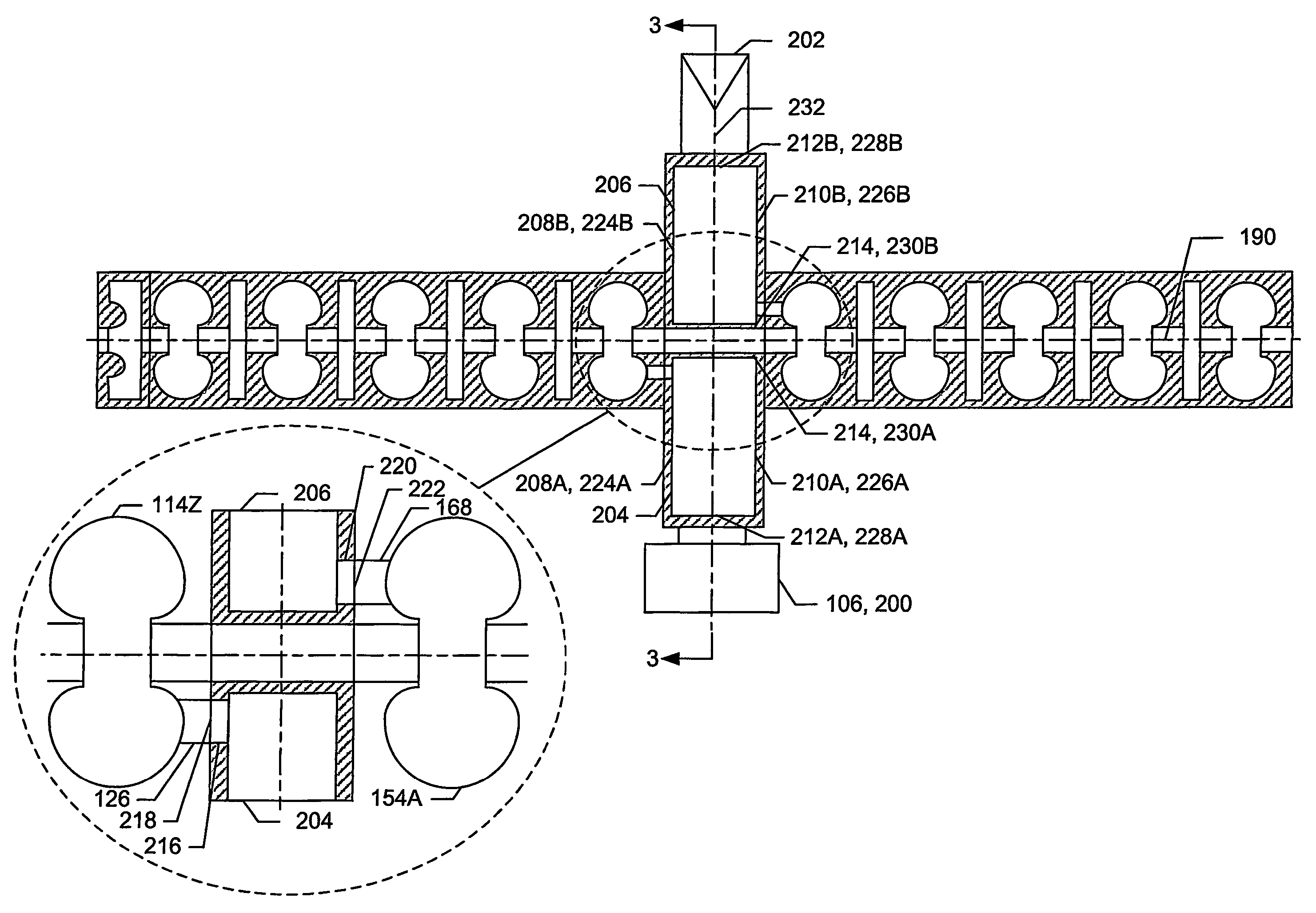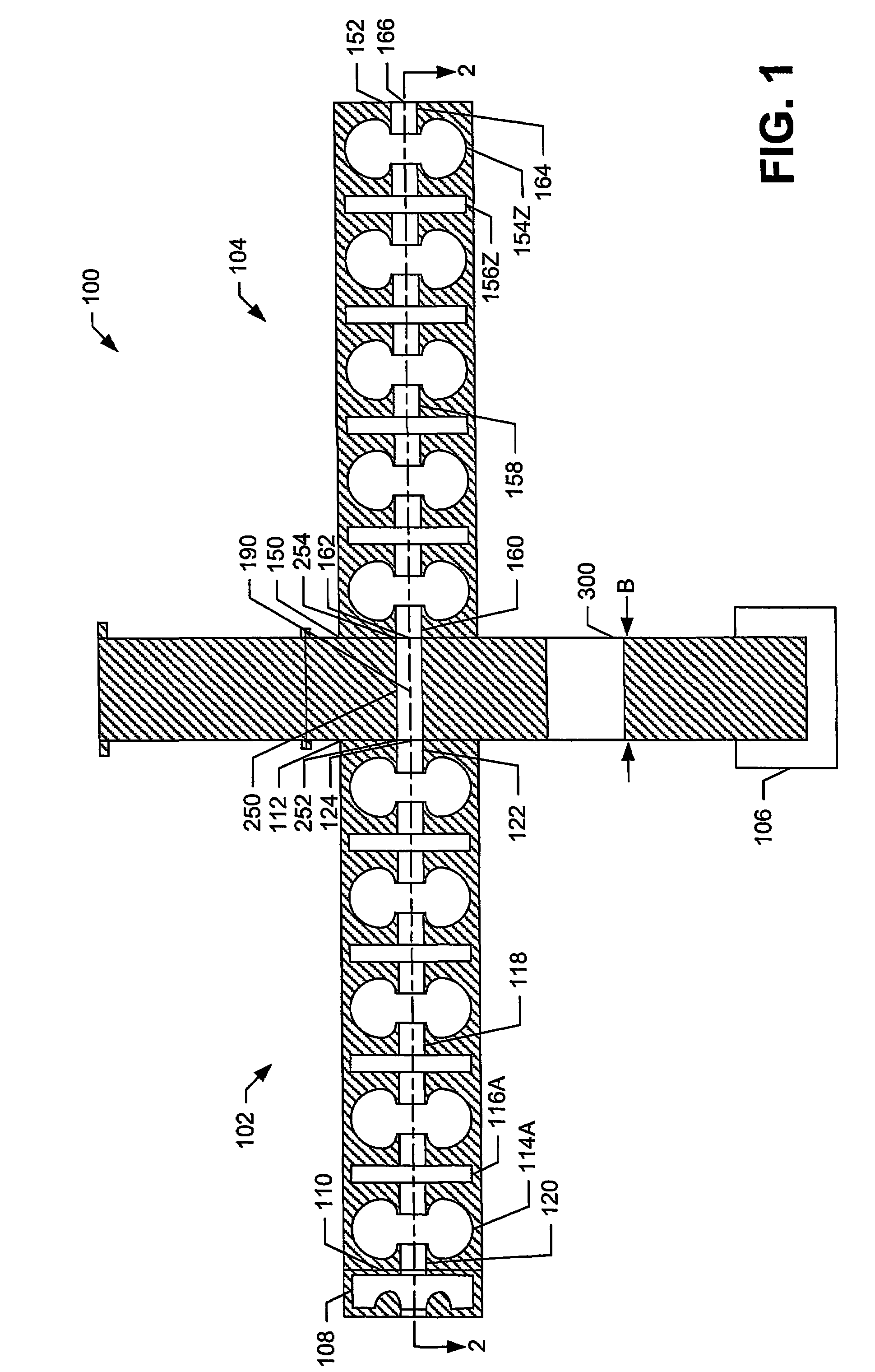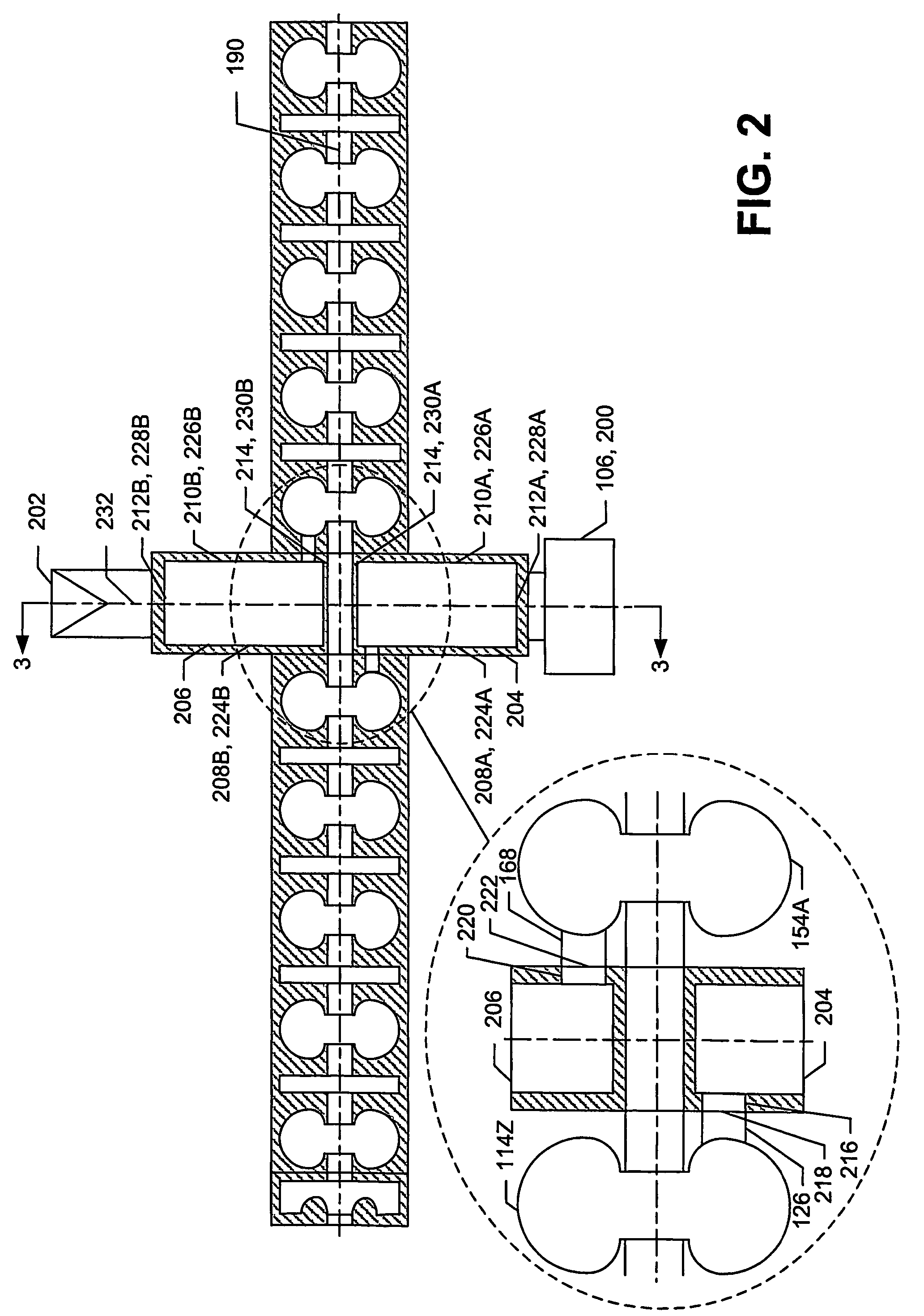Multi-section particle accelerator with controlled beam current
a particle accelerator and beam current technology, applied in accelerators, klystrons, electric discharge tubes, etc., can solve the problems of reducing accelerator efficiency, rf power loss, and not maximizing the power delivered by each feeding waveguide (i.e., in the form of electromagnetic waves), and achieve the effect of reducing or eliminating electromagnetic wave reflections
- Summary
- Abstract
- Description
- Claims
- Application Information
AI Technical Summary
Benefits of technology
Problems solved by technology
Method used
Image
Examples
Embodiment Construction
[0021]Referring now to the drawings in which like numerals represent like elements or steps throughout the several views, FIG. 1 displays a schematic sectional view of a particle accelerator system 100 in accordance with an exemplary embodiment of the present invention. The particle accelerator system 100 comprises a first accelerating section 102, a second accelerating section 104, an electromagnetic drive subsystem 106, and an injector 108. Preferably, the first and second accelerating sections 102, 104 comprise standing-wave accelerating sections 102, 104 having a biperiodic accelerating structure which are operable to accelerate charged particles through the transfer of energy from electromagnetic power provided by the electromagnetic drive subsystem 106.
[0022]The first accelerating section 102 has a first end 110 and a second end 112, and includes a plurality of accelerating cavities 114 and a plurality of coupling cavities 116 arranged in an axial arrangement. A coupling cavit...
PUM
 Login to View More
Login to View More Abstract
Description
Claims
Application Information
 Login to View More
Login to View More - R&D
- Intellectual Property
- Life Sciences
- Materials
- Tech Scout
- Unparalleled Data Quality
- Higher Quality Content
- 60% Fewer Hallucinations
Browse by: Latest US Patents, China's latest patents, Technical Efficacy Thesaurus, Application Domain, Technology Topic, Popular Technical Reports.
© 2025 PatSnap. All rights reserved.Legal|Privacy policy|Modern Slavery Act Transparency Statement|Sitemap|About US| Contact US: help@patsnap.com



